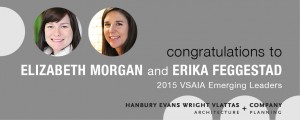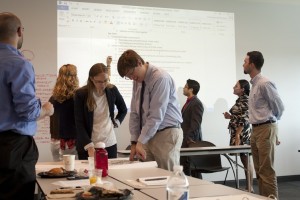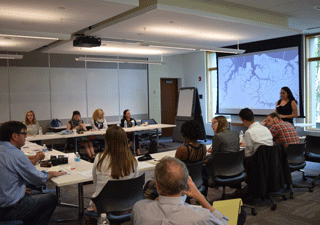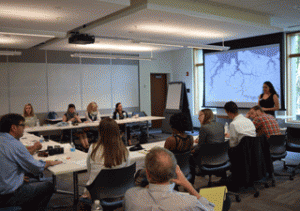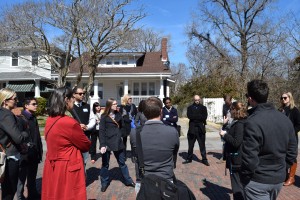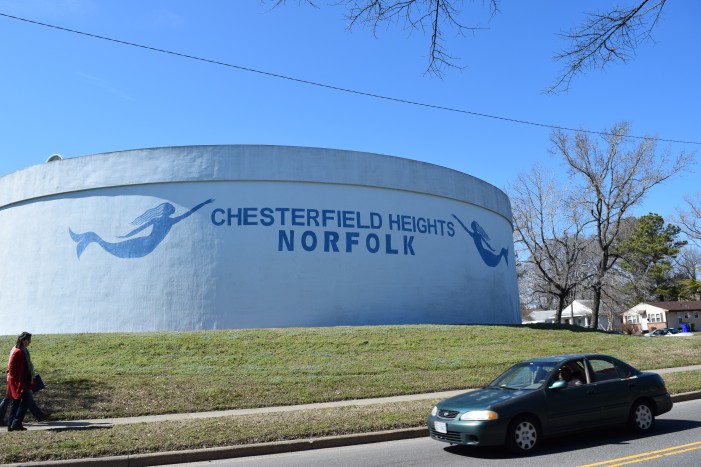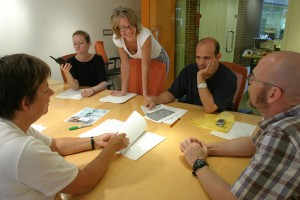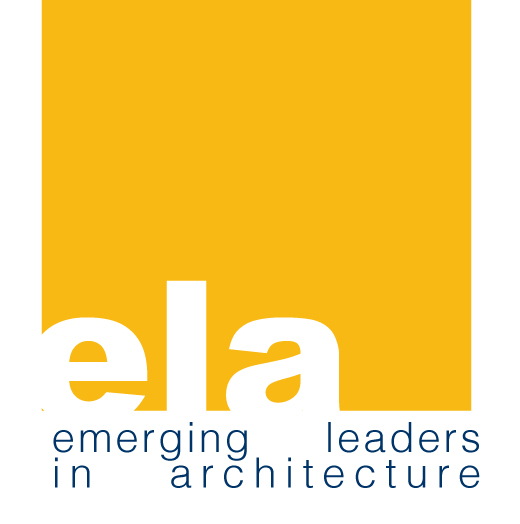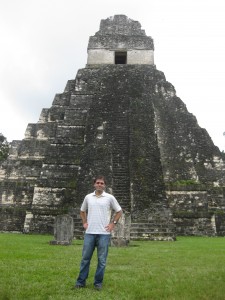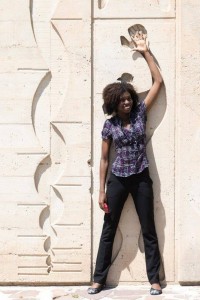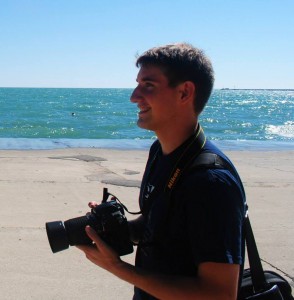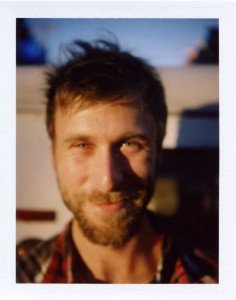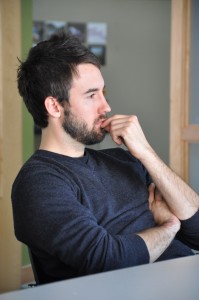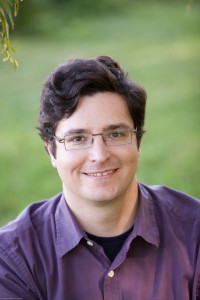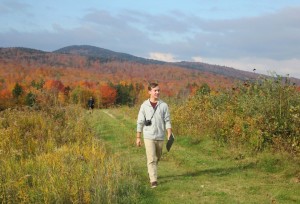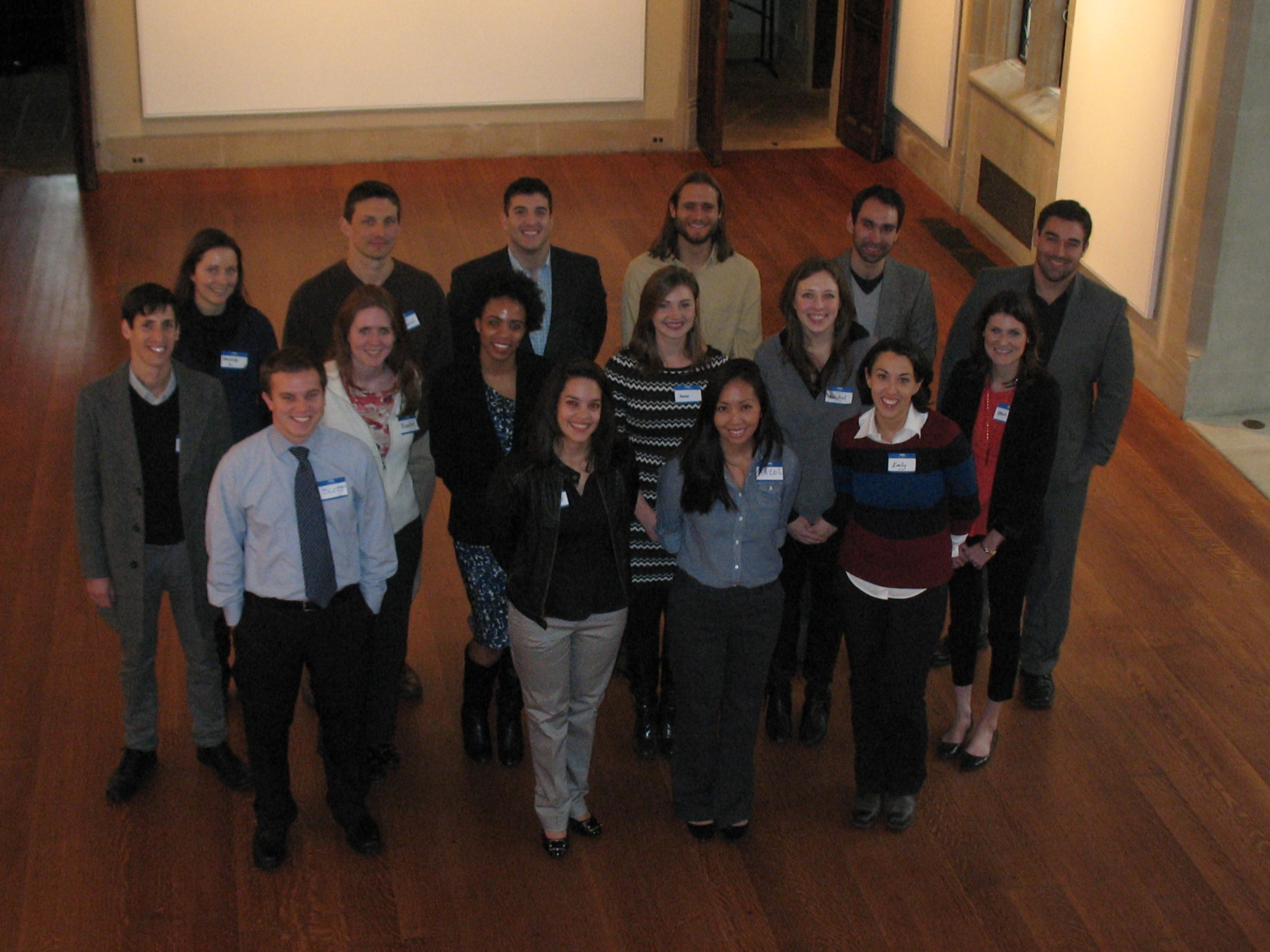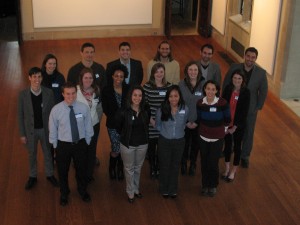AIA Virginia’s award-winning Emerging Leaders in Architecture (ELA) program was developed to jump-start the careers of young professionals. Conceived of and lead by a passionate steering committee of successful architects, the program was designed to share the things they wished they had learned in architecture school.
Each of the seven day-long-sessions focus on developing essential skills like financial management, communication and negotiation, advocacy and public service, and much more.
Want to be a member of this elite group of leaders? Apply to be a member of the ELA class of 2016. Contact Marshall Dreiling for more information on how to nominate an emerging leader or with questions about the program.
We were curious about these leaders, so we asked members of the ELA class of 2015 the same five questions, and this is what they had to say.
Isabel Argoti
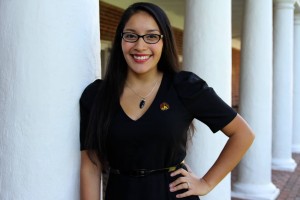
Q: What building evoked a strong reaction from you recently—either positive or negative?
A: The Woodies Building in Washington D.C. – positive. It has an interesting combination of classical architecture with intense color décor.
Q: What is the last book you read?
A: Consider Lily by Anne Dayton and May Vanderbilt
Q: How did you discover your passion for architecture?
A: My uncle is a contractor. I grew up around amazing houses and mansions being built my family first hand. Seeing the plans in drawings in his office come to life absolutely fascinated me. I wanted to design the houses he built, and plus he always told me that he would build my designs.
Q: What is your favorite thing to do to relax?
A: Sleep. Architects do not sleep enough.
Q: What advice do you have for aspiring architects?
A: I am still an aspiring architect myself. But find your inner drive for architects –I can’t see myself studying or pursing anything else in school and that makes the late nights easier.
Taylor Clark

Q: What building evoked a strong reaction from you recently—either positive or negative?
A: The ruins of St. John’s Episcopal Church in Harpers Ferry. Good architecture should aspire to leave beautiful ruins.
Q: What is the last book you read?
A: Breakfast of Champions – Kurt Vonnegut
Q: How did you discover your passion for architecture?
A: In my previous life, I studied and performed music. When I first heard Goethe’s quote, “Music is liquid architecture. Architecture is frozen music,” I was hooked.
Q: What is your favorite thing to do to relax?
A: Play my guitar or upright bass.
Q: What advice do you have for aspiring architects?
A: A professor once told me, “If the only tool I have is a hammer, then every problem looks like a nail.” Build a well-rounded knowledge of things beyond architecture. Also, spend some time swinging a hammer.
Angella Dariah

Q: What building evoked a strong reaction from you recently—either positive or negative?
A: The Beinecke Rare Books and Manuscript Library on Yale’s campus gave me a positive reaction. I thought it was quite interesting how this huge concrete block was being held by just these four tiny pillars on each corner.
Q: What is the last book you read?
A: Honestly, the last book I read was the Handbook for the Practice of Architecture. I’m one of the few in this ELA group that is still in school.
Q: How did you discover your passion for architecture?
A: My dad is an architect in Hartford, CT, and when I was little, he always took me to work with him whenever I was off from school. From then, it was history.
Q: What is your favorite thing to do to relax?
A: I absolutely love to sing and dance. Some people may say that these two activities are far from relaxing, but to me, they bring you to a whole other place, away from your problems, thoughts etc.
Q: What advice do you have for aspiring architects?
A: I know it’s so cliché but, FOLLOW YOUR DREAMS AND NEVER GIVE UP! Don’t be that person that always says “I should have”; be the person that always says “I have” (and then some lol).
Matthew Fadel

Q: What building evoked a strong reaction from you recently—either positive or negative?
A: I just got back from a trip where I was able to see The Guggenheim in Bilbao from the outside. The most interesting part was the large portion of building that was left open to the elements, allowing people to see how the materials come together.
Q: What is the last book you read?
A: Since having my first-born child this past year, I’ve been looking forward to reading many different things.
Q: How did you discover your passion for architecture?
A: Not until I was introduced to architectural theory in college; I found the philosophy and the thinking that guides design to be alluring and very powerful. Being able to convincingly reason aesthetic expression hooked me and opened me up to the profession in new ways.
Q: What is your favorite thing to do to relax?
A: Stream programs via Netflix with my wife
Q: What advice do you have for aspiring architects?
A: Take the initiative with your professional education and advancement; do not wait for things to be handed to you. Ask for them, demand them, and when you’re faced with issues that are new and unknown, don’t hesitate to ask questions.
Erika Feggestad
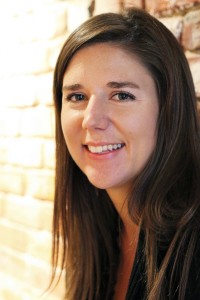
Q: What building evoked a strong reaction from you recently—either positive or negative?
A: The Beinecke Rare Book and Manuscript Library by Gordon Bunshaft. It didn’t look like much to me on the outside, but the inside is amazing when the sun is filtering through the marble.
Q: What is the last book you read?
A: The Bone Clocks by David Mitchell
Q: How did you discover your passion for architecture?
A: Who wouldn’t want to draw pretty pictures for a living?
Q: What is your favorite thing to do to relax?
A: Sit on the beach and read a book.
Q: What advice do you have for aspiring architects?
A: Your social skills can be as important as your design skills in this profession.
Lynden P. Garland, AIA

Q: What building evoked a strong reaction from you recently—either positive or negative?
A: The National Building Museum in Washington DC – It’s just an incredible space.
Q: What is the last book you read?
A: 1776 by David McCullough and Management Lessons from Mayo Clinic by Kent Seltman and Leonard Berry
Q: How did you discover your passion for architecture?
A: I have always had a passion for learning and sharing knowledge to help and improve people’s lives. My personal mantra is to find ways of making today better than yesterday. Once I realized how architecture could deeply affect people, it became the vehicle that allowed me to best express my personal mantra.
Q: What is your favorite thing to do to relax?
A: Cooking and baking are always a great joy. I’m a bit of a foodie and I like to try new recipes. I also make sure to work out. It helps to relieve stress and, more importantly, it allows me to eat whatever I want.
Q: What advice do you have for aspiring architects?
A: It’s smart to admit that you don’t know, just make sure you’re asking plenty of questions. Never let anyone diminish you, your work, or the value of your profession.
Emily Hope

Q: What building evoked a strong reaction from you recently—either positive or negative?
A: Women’s Opportunity Centre by Sharon Davis Design located in Rwanda, completed in 2013. It is a campus development that includes a series of circular pavilions, built with materials that were locally sourced and produced. The design thoughtfully responds to the project’s climate, its program and the needs of its users in a way that I find inspiring.
Q: What is the last book you read?
A: 1493 by Charles Mann
Q: How did you discover your passion for architecture?
A: It was just a realization of the common theme in all my childhood pursuits- killing dinosaurs was never as much fun as laying out the base camp.
Q: What is your favorite thing to do to relax?
A: Take a long walk while drinking a nice, strong cup of tea.
Q: What advice do you have for aspiring architects?
A: The reality of getting projects built will zap your enthusiasm if architecture is only a mild interest. Make sure being an architect is your true goal. Own the person you are and find a way to pursue your passion.
Chelsea Lindsey

Q: What building evoked a strong reaction from you recently—either positive or negative?
A: I actually just visited the Washington Monument and Jefferson Memorial at night. There was something very powerful about visiting such iconic monuments while they were lit.
Q: What is the last book you read?
A: I’ve just started to read I Know This Much Is True by Wally Lamb.
Q: How did you discover your passion for architecture?
A: My passion evolved while I was very young. I had a dollhouse that after a few years I realized was not large enough for the plastic family that lived inside. I decide to add an addition made entirely out of empty tissue boxes and books. Then in third grade, our teacher presented a lesson on architecture, where we learned about a few famous buildings and architects and why there are different typologies of building depending on their specific location. Around the same time, I started to look at mail order blueprint home magazines. I would look at a house plan and start sketching different ways to redesign the house. All of that pushed me towards a passion for design and the desire to become an architect.
Q: What is your favorite thing to do to relax?
A: I love doing yoga as a way to relax. I also really enjoy experimenting with cooking and baking, though not everything is a success!
Q: What advice do you have for aspiring architects?
A: If you are really passionate about architecture, you’ll find a way to make your dream come true. It takes a lot of hard work to go from an interest in architecture and design in high school to becoming licensed, but the people who have that passion will find a way to make their dream into a reality. Also, don’t be afraid to ask questions, that really is the best way to learn.
Alejandro J. Medina
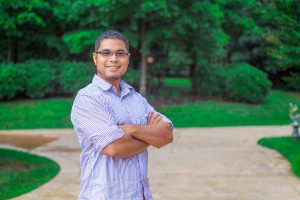
Q: What building evoked a strong reaction from you recently—either positive or negative?
A: Lately I am not so much in love with “great architecture” but I am taking great note of the offices of other business associates in a wide range of professions. I can’t say that I have a strong conclusion yet, but rather a sense that we need to devote more attention and design to the places of employment where more of America spends its life.
Q: What is the last book you read?
A: The last book I read was given to me by ELA. It is called Walkable City.
Q: How did you discover your passion for architecture?
A: When I was a young kid I watched Sleepless in Seattle; Tom Hank’s character in that movie is an architect. That’s where it all started but of course it grew from there.
Q: What is your favorite thing to do to relax?
A: I Create. It’s in my nature. Sometimes it is woodworking or photography. My focus right now is creating/launching a new young professional organization for Hampton Roads called THRIVE.
Q: What advice do you have for aspiring architects?
A: Stay strong if you love it. The profession requires many sacrifices, but all of it is worth it when you see you first building come to life. Especially when you realize that what you created will live long past your time on this earth.
Elizabeth Morgan

Q: What building evoked a strong reaction from you recently—either positive or negative?
A: I was recently shocked by renderings for a new skyscraper at the Thermal Baths in Vals, Switzerland by Morphosis Architects. Having visited Peter Zumthor’s Therme Vals a few years ago, and delighting in the building’s sensitivity to place, scale, light, sound, and material, I can only say that this new resort hotel appears to be on the other end of the spectrum.
Q: What is the last book you read?
A: Beautiful Ruins, a novel by Jess Walter
Q: How did you discover your passion for architecture?
A: While in college pursuing a fine art degree, I became involved with a couple of non-profit organizations and found that I had great passion for both creating and community outreach. Art and architecture have always been present in my life, (my dad is a landscape architect/designer and my mother is an artist in many ways), but I never really considered how well my interests and skills aligned with the profession of architecture until I read two books: “Design Like You Give a Damn” by Cameron Sinclair and “Rural Studio: Samuel Mockbee and an Architecture of Decency” by Dean and Hursley.
Q: What is your favorite thing to do to relax?
A: I relax either by practicing yoga or sipping on a martini with a good book, usually not together though. I’m also a sucker for a well-made film or television series.
Q: What advice do you have for aspiring architects?
A: Don’t take yourself too seriously but put some serious energy and positivity in to your work, and nurture the relationships you make with colleagues/faculty/mentors in school and beyond.
Kristin Moye
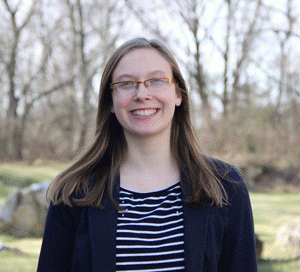
Q: What building evoked a strong reaction from you recently—either positive or negative?
A: Not a building, but The Plot 2.0 in downtown Norfolk by Work Program Architects is a really fun civic project that I thoroughly enjoyed.
Q: What is the last book you read?
A: The Left Hand of Darkness by Ursula K. Le Guin
Q: How did you discover your passion for architecture?
A: Through my academic community. I had some incredible professors and some amazing friends who showed me that architecture is a challenging and wildly beneficial profession for the soul and for the community.
Q: What is your favorite thing to do to relax?
A: Read science fiction novels.
Q: What advice do you have for aspiring architects?
A: Find a community of architects, builders, engineers, or tinkerers that you can talk to openly about architecture and the built environment. Don’t stop talking about it.
Vanessa Raquel Reisin
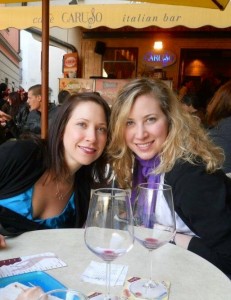
Q: What building evoked a strong reaction from you recently—either positive or negative?
A: Casa Azul – Frida Kahlo’s house in Mexico City
Q: What is the last book you read?
A: The Boys in the Boat: Nine Americans and Their Epic Quest for Gold at the 1936 Berlin Olympics
Q: How did you discover your passion for architecture?
A: My path was indirect, however gave me the background and experience that brought me to where I am today. I studied and worked in urban planning for a few years before exploring architecture through two non-degree graduate programs in New York and Paris. The exhilaration and pure adrenaline of studio drew me in.
Q: What is your favorite thing to do to relax?
A: Eat. I love big meals with close friends and family.
Q: What advice do you have for aspiring architects?
A: Take advantage of all of your resources, especially the architects around you of earlier generations. Be engaged, and present, and humble, yet bold. Travel.
John A. Salmons
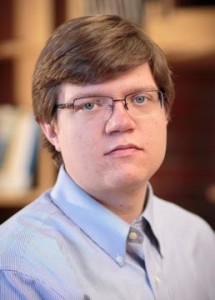
Q: What building evoked a strong reaction from you recently—either positive or negative?
A: The Walters in Baltimore. It was a positive reaction for me; I really enjoyed how the spaces flowed into one another.
Q: What is the last book you read?
A: The last book that I read was Thinking Architecture by Peter Zumthor
Q: How did you discover your passion for architecture?
A: It was on a trip to New York, when I saw the Guggenheim I knew I wanted to be an architect.
Q: What is your favorite thing to do to relax?
A: I really enjoy day trips, traveling is the best way to find unexpected wonders of architecture.
Q: What advice do you have for aspiring architects?
A: Don’t ever give up on the passion that fires your inspiration.
Lauren Shumate
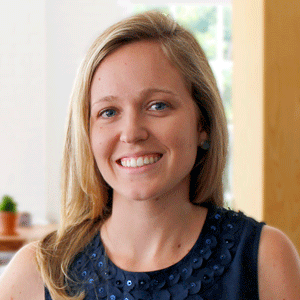
Q: What building evoked a strong reaction from you recently—either positive or negative?
A: Hagia Sofia (Istanbul, Turkey) – positive
Q: What is the last book you read?
A: Quiet: The Power of Introverts in a World That Can’t Stop Talking by Susan Cain
Q: How did you discover your passion for architecture?
A: I’ve always liked the idea of architecture (played with lots of legos as a kid, etc.) but it wasn’t until my first architecture studio that I had an outlet for my creativity and I developed a true passion for design.
Q: What is your favorite thing to do to relax?
A: I love to travel. There is nothing like dropping into a new culture and experiencing new food, language, and people. My husband and I recently took a trip to Istanbul and I highly recommend it!
Q: What advice do you have for aspiring architects?
A: Work hard but value quality, contribution, and a healthy work/life balance above all. Value relationships with classmates and colleagues – the architecture profession is much smaller than you may realize – you will continue to cross paths!
Emily Striffler, Assoc. AIA

Q: What building evoked a strong reaction from you recently—either positive or negative?
A: While in Cape Cod we came across the East Sandwich Preparative Quaker Meeting House, which was built over 200 years ago. It’s a very humble building, but it is incredibly well made. Everything was thought about as it was built, and the materials are honest and rough. It’s still used today, and that really caused me to pause and appreciate its simplicity and timelessness.
Q: What is the last book you read?
A: The life-changing magic of tidying up by Marie Kondo
Q: How did you discover your passion for architecture?
A: My mother is an artist and my father is an engineer – I can’t recall a specific moment where I discovered it – I think my upbringing enabled me to acknowledge it very early in life.
Q: What is your favorite thing to do to relax?
A: Gardening. Can’t beat it, in my opinion. Walking the dog is a close second!
Q: What advice do you have for aspiring architects?
A: Relax, and find time to do something that interests you every day.
Daniel Whitmire
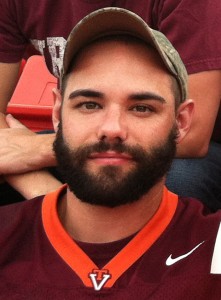
Q: What building evoked a strong reaction from you recently—either positive or negative?
A: Morphosis Architect’s minimalist skyscraper at Vals – I’m intrigued!
Q: What is the last book you read?
A: Mere Christianity
Q: How did you discover your passion for architecture?
A: I realized I loved architecture during my 4th year of architecture school at Virginia Tech
Q: What is your favorite thing to do to relax?
A: Fighting and other non-relaxing things
Q: What advice do you have for aspiring architects?
A: Pay attention – you can see more by traveling less. Also, pens are invaluable!

